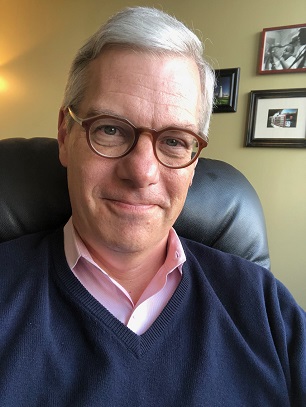
Centennials don’t happen every day, but when they do they’re a big deal. That’s why I am so excited about this special 100th Anniversary edition of New England Museums Now.
We officially kicked off our centennial at last year’s conference in Stamford. The date roughly coincided with the starting point in the NEMA creation story. In the fall of 1918 the formidable Delia Isabel Griffin, founding director of the Boston Children’s Museum, convened a meeting at the Hotel Westminster in Boston’s Back Bay to organize a regional museum conference (the first in the country) for people who couldn’t afford the time or money to go the national AAM conference.
The meeting resulted, the following April, in the very first “New England Conference,” held at the New England Society of Natural History in Boston (today the Museum of Science).
Early conferences were quite a bit different than today. First of all, they were small and intimate, generally held in museums. To give you a point of comparison, the 1919 conference attracted 40 attendees. More than 850 people attended last year’s conference and our high water mark was more than 1,200 attendees a few years ago at our event in Boston.
Back in the day, conferences were scholarly affairs. Colleagues presented papers to the audience as they do in academic settings. The first keynote address, for example, was from Dr. Hermon C. Bumpus, president of Tufts College, who presented a paper titled “Wider Fields for Museum Workers.” I’m sure those 40 conference attendees ate it up.
The brilliant Harvard historian Arthur Schlesinger, Jr., who served in the Kennedy White House, spoke at our 1957 conference and provided attendees with an interesting forecast. “The great challenge,” he said, “which is going to strike society and our institutions with peculiar force in the years to come is the challenge involved in the steady and remorseless increase in the amount of free, spare, uncommitted time which people are going to have in their daily lives.” He might have been a brilliant historian, but not such a great futurist as it turned out.
Early conferences were also genteel and classy affairs. At the 1920 conference in Pittsfield, Massachusetts, our records tell us that “trustees of the Berkshire Athenaeum gave the conference a very delightful automobile trip through the Berkshire country on Saturday morning.”
At the 1941 conference in Newport, it was reported that “the Misses Wetmore served tea to conference attendees at their most charming home, full of objects of museum interest.” It turns out that their “most charming home” was one of the Newport mansions, Chateau-Sur-Mer, now part of the Preservation Society of Newport County.
And for a span of several years back in the 1960s, there was a tradition of serving sherry before lunch at the conference. Perhaps this is a tradition worth reviving.
As different as those conference were, however, there are similarities with more recent events. For example, museum professionals have been obsessed with technology from the very beginning. At the 1920 conference it was reported that “In the evening, the subject of the use of motion pictures in the educational work of museums was presented very thoroughly. Two of the best machines on the market were exhibited. The Red Cross sent films illustrating a wide range of possibilities of a combination of the film and the lecture. In the discussion it was decided that motion pictures were not appropriate for museum use.”
At the 1927 conference at the Rhode Island School of Design, conference attendees discussed “various lighting problems and their solution” an evergreen issue if there ever was one. Other perennial topics from past conferences: how to make exhibits more interesting to visitors, collections policies, and the #1 issue that has been baked into the museum profession since the dawn of time, long hours and low pay.
For more tidbits about past NEMA conferences, take a look at the compilation of archival reports found in this issue of Museums Now. Also, I recommend a visit to the NEMA Centennial Timeline, featured online HERE.
One of the highlights of this centennial year for me was the chance to interview the very first NEMA executive director, Pat Nick. Now in her 89th year, Pat very graciously offered her memories of NEMA when it was incorporated in the 1970s, as well as wisdom for the newest generation of museum professionals. You can read about Pat and her experiences in this issue.
In addition to being occasions for reminiscing, centennials are also occasions for gratitude. Accordingly, I’d like to express my thanks and appreciation for all of the executive directors who paved the way for what I do now: Pat Nick, Pamela Brusic, Laura Roberts, Naomi Joshi, and Kate Viens. I’m sure I speak for all of them in expressing gratitude for all of the volunteers who have made NEMA such a successful organization, especially the board of directors and Professional Affinity Group chairs who through the years, like our founder Delia Griffin, worked tirelessly to advance the cause of the museum profession.

Dan Yaeger